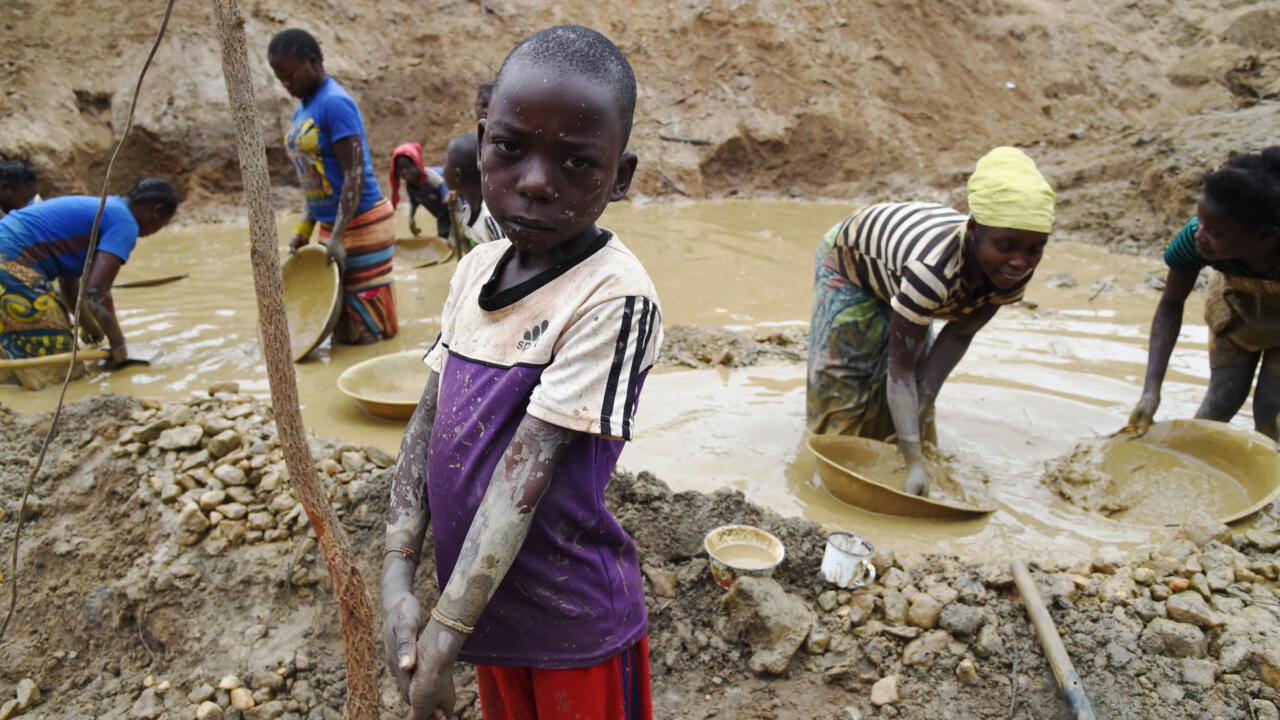Interview with Tim Crijns The macro advantages of microfinance – Triodos Investment Management

Report on the Triodos Microfinance Fund’s Contribution to Sustainable Development Goals
This report analyses the operations and impact of the Triodos Microfinance Fund, focusing on its role in advancing financial inclusion and contributing to the United Nations Sustainable Development Goals (SDGs) in emerging markets.
Advancing SDG 1 (No Poverty) and SDG 8 (Decent Work and Economic Growth)
The fund’s primary objective is to provide capital to individuals excluded from traditional banking systems, directly addressing key targets within the SDGs.
Core Operations and Beneficiary Impact
- Beneficiary Reach: The fund’s portfolio of microfinance institutions (MFIs) serves 12.5 million loan recipients.
- Entrepreneurial Focus: The majority of financing supports entrepreneurs in starting or expanding small businesses, fostering local economic activity and contributing to SDG 8.
- Poverty Alleviation: By enabling income generation, these loans are a critical tool for poverty reduction (SDG 1). Ninety percent of recipients report an improved quality of life.
Loan Characteristics
- Average Loan Size: Approximately EUR 2,000.
- Regional Variation: Loan amounts are typically a few hundred euros in India and Africa, with higher amounts in Latin America and Eastern Europe.
Promoting SDG 5 (Gender Equality) and SDG 10 (Reduced Inequalities)
A significant focus of the fund is empowering women and reducing systemic inequalities through targeted financial services.
Empowering Female Entrepreneurs
- Target Demographic: Over 70% of end-customers are women, primarily in rural areas.
- Economic Empowerment: Access to credit provides women with the means to achieve economic independence, enhancing their role in their communities and contributing directly to SDG 5.
- Financial Performance: The repayment rate for female borrowers is noted to be higher than that for male borrowers, demonstrating the viability of this focus.
Supporting Broader Development Outcomes
The impact of financial inclusion extends beyond economic metrics, creating positive ripple effects that support other critical SDGs.
Contributions to Social Goals
- SDG 4 (Quality Education): Improved household income allows families to afford schooling for their children.
- SDG 3 (Good Health and Well-being): The fund supports institutions like Garantia in Mexico, which provides loans to rural medical clinics for the purchase of essential equipment.
Operational Framework and Risk Management
The fund employs a robust operational model built on partnerships and diligent risk mitigation to ensure sustainable impact.
Investment Strategy and Partnerships (SDG 17)
- Investment Model: The fund provides loans (EUR 1-10 million) or takes equity stakes in local MFIs, fostering partnerships for the goals (SDG 17).
- Local Expertise: In-house specialists and regular on-site due diligence ensure a thorough understanding of local contexts.
- Case Study: A long-term investment in Centenary Bank in Uganda has helped it grow from a microfinance project into a major national financial institution with a continued focus on financial inclusion.
Risk Profile
- Repayment Rate: Approximately 95% of all microcredit loans are repaid.
- Risk Diversification: The primary risk is country-specific (e.g., conflict). This is mitigated by spreading investments across approximately 40 countries.
Future Outlook and Investment Potential
The demand for microfinance is projected to grow, presenting an opportunity for investors to generate both financial returns and measurable social impact.
Market Growth and Investor Interest
- Unmet Need: Over 1.5 billion people globally still lack adequate access to financial services, indicating significant potential for growth in advancing SDG 1 and SDG 10.
- Institutional Appeal: Institutional investors are increasingly interested due to microfinance’s low correlation with traditional asset classes and its alignment with social impact mandates.
- Responsible Lending: Future growth must be managed responsibly to ensure loans are provided only to those with the capacity to repay, protecting both borrowers and lenders.
1. Which SDGs are addressed or connected to the issues highlighted in the article?
SDG 1: No Poverty
- The article directly addresses poverty alleviation by focusing on “financial inclusion in emerging markets.” The fund provides microloans to “people who would otherwise be unable to obtain financing,” enabling them to start or expand businesses and improve their quality of life. This is supported by the statement that “Ninety percent of people with a microcredit loan indicate that their quality of life has improved.”
SDG 5: Gender Equality
- The article highlights a strong focus on empowering women economically. It explicitly states that women are the primary beneficiaries: “Mainly women in rural areas. More than 70% of our loans go to female end-customers.” This demonstrates a direct contribution to gender equality by providing women with access to financial resources.
SDG 8: Decent Work and Economic Growth
- The core activity described in the article is providing capital for entrepreneurship, which is a key driver of economic growth. The text mentions that “Most of the money goes to entrepreneurs to start or expand a business,” giving examples like purchasing a “sewing machine for a workshop in India or to buy some more cows for a farmer in Kenya.” This fosters job creation and supports micro- and small-sized enterprises.
SDG 3: Good Health and Well-being
- While not the primary focus, the article provides a specific example of an investment that contributes to this goal. It mentions a loan to “Garantia in Mexico, which provides loans to rural medical clinics to purchase medical equipment,” thereby improving access to healthcare facilities in rural areas.
SDG 4: Quality Education
- The article implies a connection to this goal as a positive outcome of financial inclusion. When describing the improved quality of life for loan recipients, it notes that this is “because their children can go to school, for instance.” This shows that economic empowerment through microfinance can lead to better educational opportunities for the next generation.
2. What specific targets under those SDGs can be identified based on the article’s content?
Target 1.4: Access to financial services, including microfinance
- This target aims to ensure the poor and vulnerable have equal rights to economic resources and access to financial services, including microfinance. The entire article is centered on this, describing a fund that “focuses purely on financial inclusion” and provides microcredit to “12.5 million people” who are “excluded from the banking system.”
Target 5.a: Equal rights to economic resources and financial services for women
- This target focuses on giving women equal rights and access to financial services. The article directly aligns with this by stating, “More than 70% of our loans go to female end-customers,” demonstrating a clear effort to provide women with the financial tools for economic empowerment.
Target 8.3: Promote entrepreneurship and growth of micro-, small- and medium-sized enterprises
- This target encourages the growth of small enterprises through access to financial services. The article supports this by explaining that loans are used by “entrepreneurs to start or expand a business.” The fund’s strategy is to give “people the means to improve their own situation” through “personal control and entrepreneurship.”
Target 8.10: Universal access to banking, insurance and financial services
- This target aims to strengthen domestic financial institutions to expand access to financial services for all. The fund contributes by investing in and providing loans to local “microfinance institutions.” The example of Centenary Bank in Uganda, which “has since grown into one of the largest financial institutions in the country, while still maintaining its focus on microfinance,” perfectly illustrates this target in action.
3. Are there any indicators mentioned or implied in the article that can be used to measure progress towards the identified targets?
Number of loan beneficiaries
- The article provides a direct quantitative measure of the fund’s reach: “The microfinance institutions in our portfolio currently have outstanding loans to 12.5 million people.” This number serves as a key indicator of the scale of access to financial services provided.
Percentage of female beneficiaries
- To measure progress on gender equality (Target 5.a), the article specifies that “More than 70% of our loans go to female end-customers.” This percentage is a clear indicator of the extent to which women are being reached and empowered.
Number of people without access to financial services
- The article quantifies the scale of the problem financial inclusion aims to solve, stating, “More than 1.5 billion people worldwide have little or no access to financial institutions.” This figure serves as a baseline indicator against which progress can be measured.
Loan repayment rate
- The article mentions that “Around 95% of microcredit loans are repaid.” This high repayment rate is an indicator of the success and sustainability of the micro-enterprises being funded, as well as the effectiveness of the microfinance model itself.
Self-reported improvement in quality of life
- A qualitative indicator of impact is mentioned: “Ninety percent of people with a microcredit loan indicate that their quality of life has improved.” This provides insight into the perceived social impact of the loans beyond purely economic measures.
4. Create a table with three columns titled ‘SDGs, Targets, and Indicators’ to present the findings from analyzing the article.
| SDGs | Targets | Indicators |
|---|---|---|
| SDG 1: No Poverty | 1.4: Ensure the poor have equal rights to economic resources and access to financial services, including microfinance. |
|
| SDG 5: Gender Equality | 5.a: Undertake reforms to give women equal rights to economic resources and access to financial services. |
|
| SDG 8: Decent Work and Economic Growth | 8.3: Promote policies that support entrepreneurship and the growth of micro- and small-sized enterprises.
8.10: Strengthen domestic financial institutions to expand access to banking and financial services for all. |
|
| SDG 3: Good Health and Well-being | (Implied) 3.8: Achieve universal health coverage, including financial risk protection and access to quality essential health-care services. |
|
| SDG 4: Quality Education | (Implied) 4.1: Ensure that all girls and boys complete free, equitable and quality primary and secondary education. |
|
Source: triodos-im.com

What is Your Reaction?
 Like
0
Like
0
 Dislike
0
Dislike
0
 Love
0
Love
0
 Funny
0
Funny
0
 Angry
0
Angry
0
 Sad
0
Sad
0
 Wow
0
Wow
0









































































